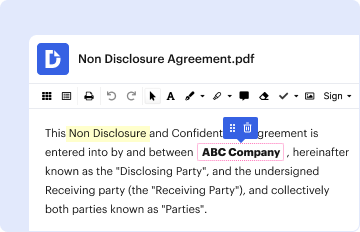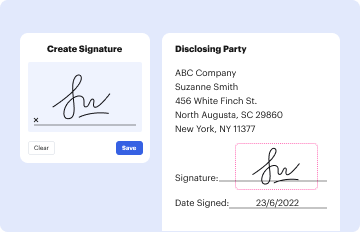Definition and Meaning of Multiple Choice Tests
A multiple choice test is an assessment format in which participants select the correct answer from a list of options. Each question typically presents a statement or scenario followed by several answer choices, often labeled with letters (A, B, C, etc.). This testing method is widely used in educational settings, standardized assessments, and various professional certifications due to its efficiency in evaluating knowledge.
Key characteristics of multiple choice tests include:
- Objective assessment: Responses can be graded quickly and easily, allowing for efficient evaluation of large groups.
- Diverse question types: Questions can assess a range of knowledge, from basic recall to higher-order thinking skills.
- Standardized format: The uniform structure allows for consistent testing conditions, which is beneficial for comparative analysis.
Types of Multiple Choice Tests
- Single response: Only one answer is correct among the options provided.
- Multiple response: More than one answer may be correct, requiring test-takers to select all applicable answers.
- Best response: All options may appear correct, but one is considered the best answer based on context or specific criteria.
How to Use the Multiple Choice Test
Utilizing a multiple choice test effectively involves careful consideration of the questions, options, and overall structure:
- Designing Questions: Ensure that questions are clear, concise, and directly related to the material being assessed. Ambiguity can confuse test-takers and undermine the assessment's validity.
- Creating Answer Choices: Design distractors (incorrect options) that are plausible to prevent guessing. Effective distractors engage test-takers and test their understanding.
- Scoring Mechanism: Determine whether partial credit is given for partially correct answers or if scoring should be all-or-nothing. This impacts how knowledge is assessed and can affect the overall grade distributions.
Steps to Create a Multiple Choice Question
- Identify the learning objective: Clarify what knowledge or skill the question is designed to assess.
- Draft the stem: Write a clear and specific question or statement.
- Develop answer options: Create one correct answer and credible distractors.
- Review for clarity and relevance: Ensure questions align with learning objectives and the language is accessible.
Key Elements of a Multiple Choice Test
Understanding the key elements that contribute to the effectiveness of a multiple choice test is essential:
- Clarity of Questions: Each question must be easy to interpret without misinterpretation.
- Validity: The test should accurately measure what it claims to assess, reflecting the objectives of the learning material.
- Reliability: The test results should consistently yield similar outcomes under similar conditions.
- Balance: A well-rounded test includes a mix of factual recall, application, and analytical questions.
Strategies for Effective Test Administration
- Preparation: Communicate test instructions clearly before distribution to avoid confusion.
- Timing: Allocate appropriate time for test completion while considering scope and complexity.
- Environment: Maintain a conducive testing environment that minimizes distractions, ensuring optimal focus for all participants.
Examples of Using Multiple Choice Tests
Multiple choice tests are versatile and can be utilized in various contexts, including:
- Education: Schools often administer multiple choice tests to evaluate student learning, provide standardized assessments, and prepare students for higher education entrance exams.
- Certification Exams: Professional fields, such as nursing or IT, frequently use this format for licensure exams.
- Surveys and Feedback: Organizations employ multiple choice questions in surveys to gather employee or customer feedback effectively.
Sample Questions
-
In physics, what is kinetic energy best defined as?
- A) Energy stored in an object based on its height
- B) Energy an object possesses due to its motion
- C) Energy measured in volts
- D) Energy that does not change form
-
Which of the following is a renewable source of energy?
- A) Coal
- B) Oil
- C) Solar
- D) Natural gas
Important Terms Related to Multiple Choice Tests
Understanding the terminology associated with multiple choice tests can enhance clarity and comprehension in both construction and evaluation:
- Distractor: An incorrect answer option designed to challenge test-takers.
- Stem: The part of a question that asks something or presents a scenario to which test-takers respond.
- Key: The correct answer to a multiple choice question.
- Item Analysis: A technique used to evaluate how each question performed in terms of difficulty and discrimination among test-takers.
Benefits of Familiarity with Terminology
- Improves communication among educators and test developers regarding question design.
- Aids in the creation of effective test strategies for both instructors and students.
- Facilitates better interpretation of test results and item performance data, contributing to instructional adjustments.
State-Specific Rules for Multiple Choice Tests
Multiple choice testing regulations can vary based on state education standards and testing requirements. It is crucial for educators to be aware of their specific state's guidelines:
- Testing Standards: States may impose guidelines on the content and structure of multiple choice tests.
- Accommodations: Depending on individual needs, states may require specific accommodations for learners with disabilities.
- Reporting and Accountability: Certain states require data reporting from multiple choice tests to assess educational outcomes and funding.
Variability Across States
- Some states emphasize standardized testing requirements more than others, impacting the frequency and style of multiple choice questions used in assessments.
- Changes in state legislation may influence test administration policies and the inclusion of particular educational standards in multiple choice questions.
Who Typically Uses Multiple Choice Tests
Multiple choice tests are utilized across various sectors, including:
- Educational Institutions: Teachers and educational administrators implement them for assessing student performance and understanding.
- Professional Licensure Organizations: Many professional fields, including healthcare and finance, require certification through multiple choice assessments.
- Corporate Training: Companies employ multiple choice tests during training programs to measure employee knowledge and competencies.
Profiles of Typical Users
- Teachers: Create assessments to gauge student knowledge and progress.
- Professionals: Take certification exams to validate their expertise and qualifications.
- Corporate Trainers: Assess learning outcomes and training effectiveness to improve employee performance.
By understanding these dimensions of multiple choice tests, users can better appreciate their utility and applications in educational and professional contexts.



